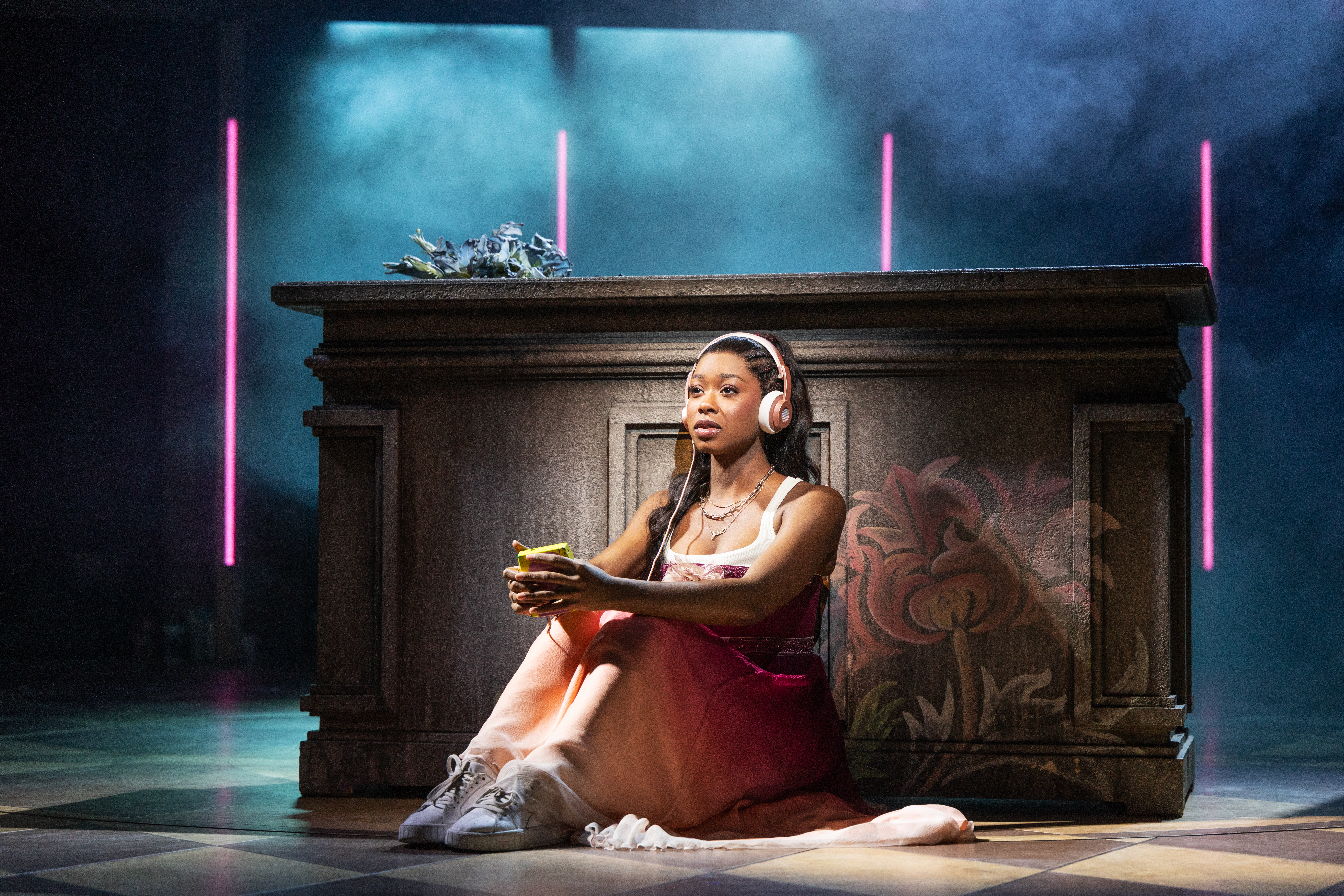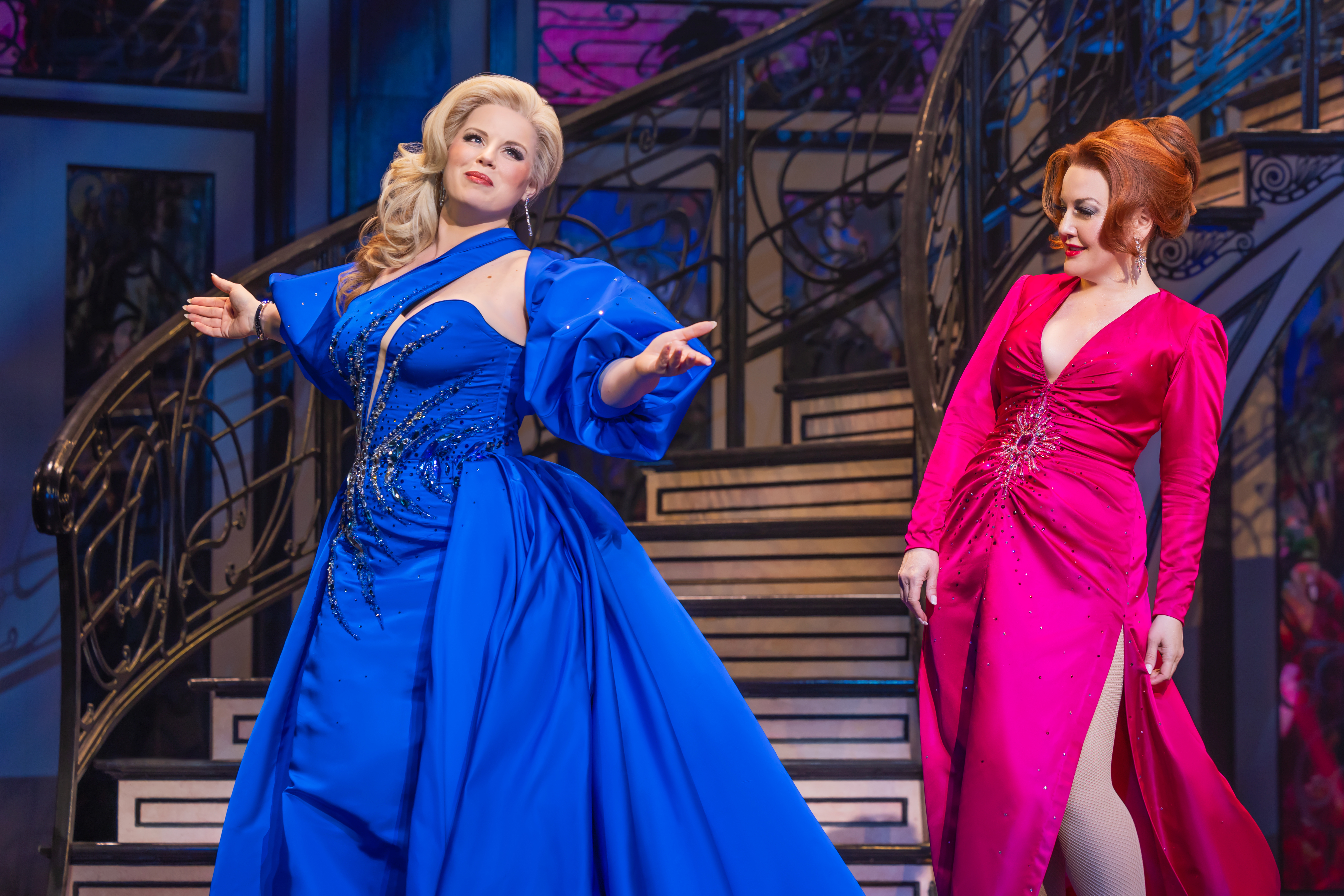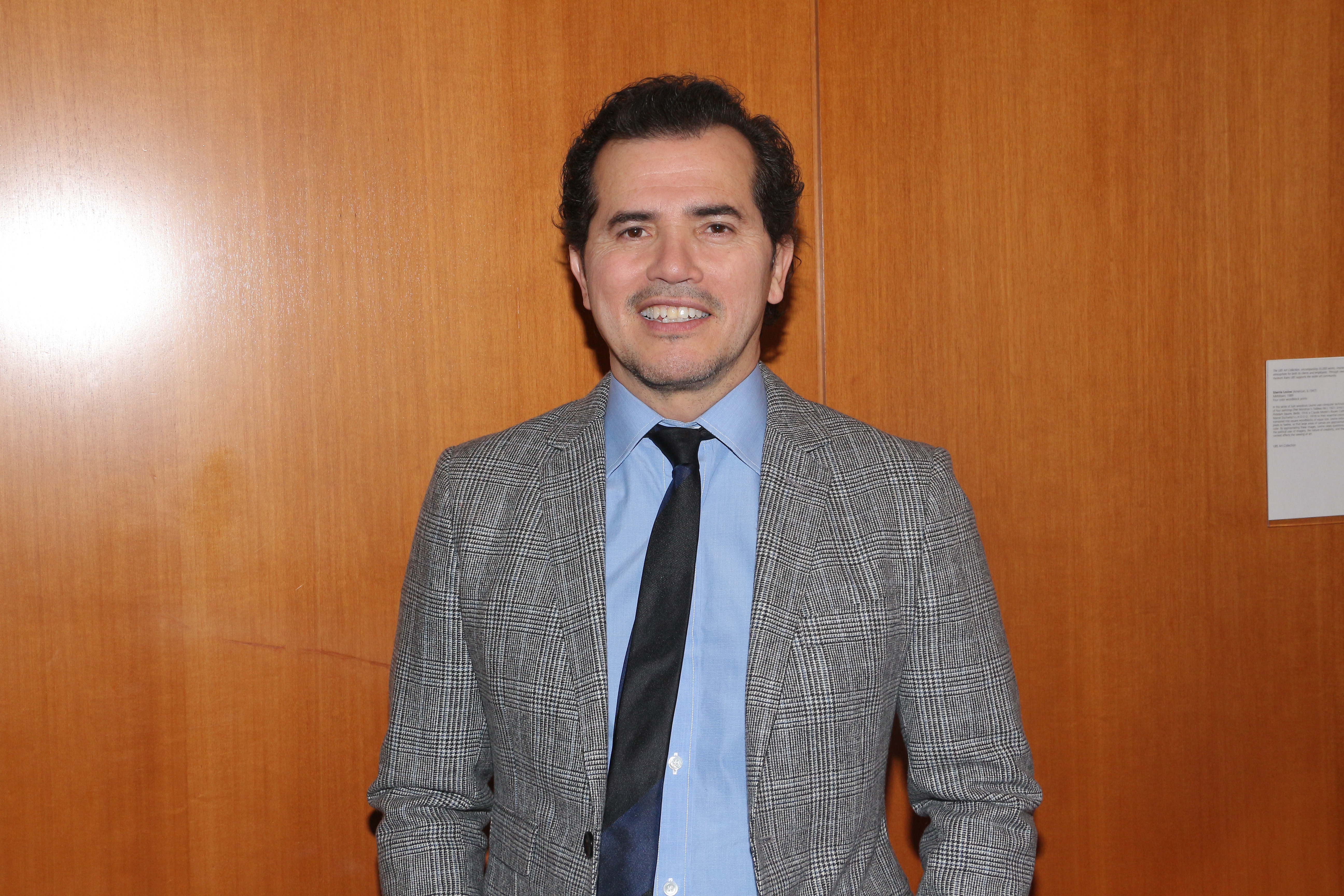Review: Patrick Page Conjures Shakespeare’s Villains in His Solo Show All the Devils Are Here
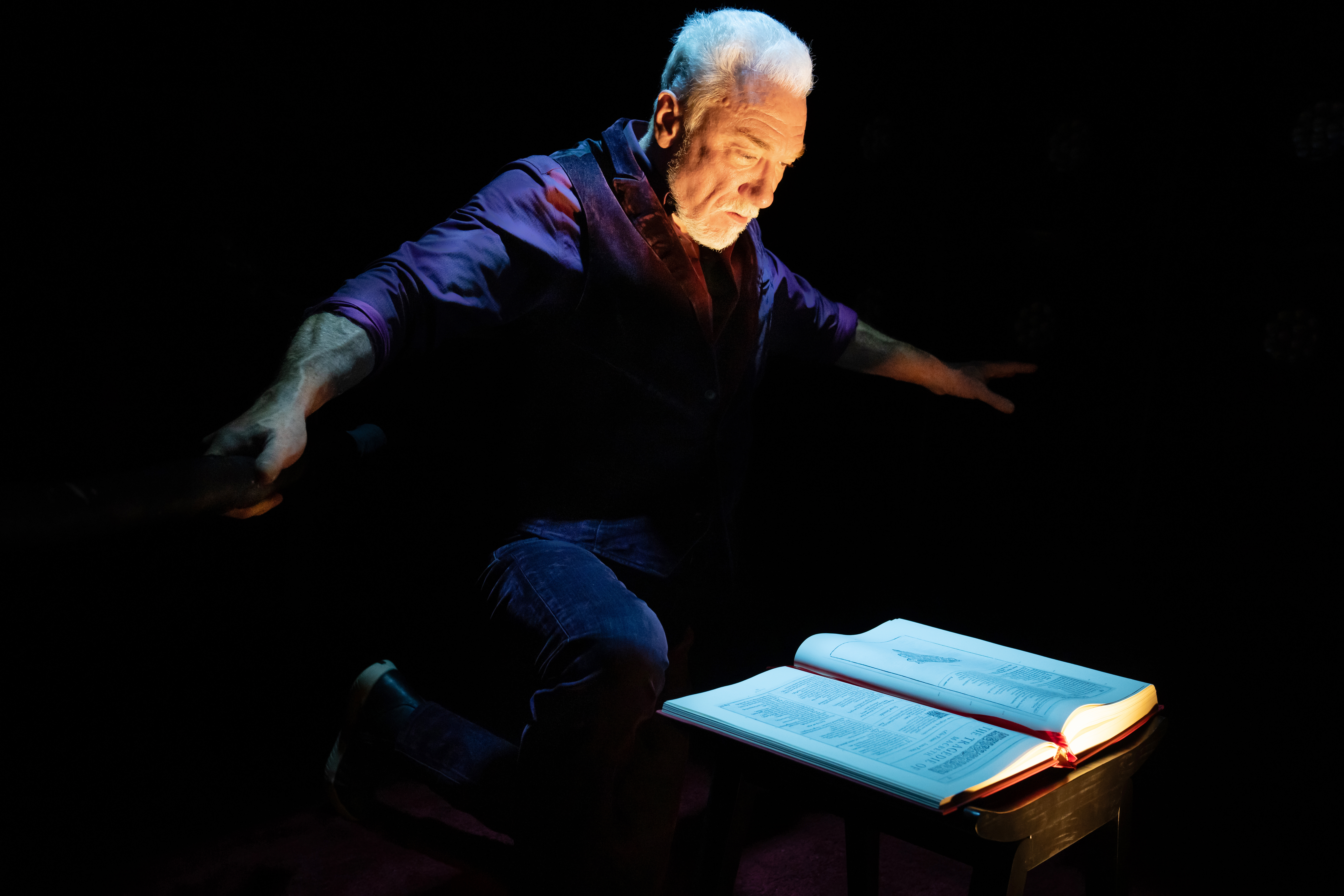
(© Julieta Cervantes)
It’s easy to forget how indebted we are to Shakespeare for the stories we consume every day. We love to hate the members of Succession‘s Roy family but may overlook the fact that their power, greed, and vicious sibling rivalry is rooted in King Lear and his children. Or we may not realize that the fratricidal impulses of Scar in The Lion King are directly related to those of Claudius in Hamlet. The list goes on.
Shakespeare’s ongoing influence with these and dozens of other villainous archetypes is not lost on Patrick Page, who has created a new solo show titled All the Devils Are Here: How Shakespeare Invented the Villain at the DR2 Theatre. With director Simon Godwin, Page has put together a kind of whirlwind Shakespeare 101 masterclass on the Bard’s most malevolent characters, taking us from Richard III to Macbeth and incorporating some theories about how the Bard may have come up with his baddest baddies.
It’s a format that in lesser hands could come off more like a lecture than a performance (Arnulfo Maldonado’s set does include a professorial desk with a hefty Shakespeare tome laid upon it). But as Bill Irwin did in his show on Samuel Beckett, Page manifests his lifetime experience with and love for his subject in a brisk, engaging work. While the show wobbles from time to time with some scholarship that feels a bit too conjectural, Page, who has played Lear as well as Hades in Hadestown, lends an authoritativeness that will convince Shakespeare beginners and experts alike of the Bard’s pioneering importance in the history of theatrical antagonists.
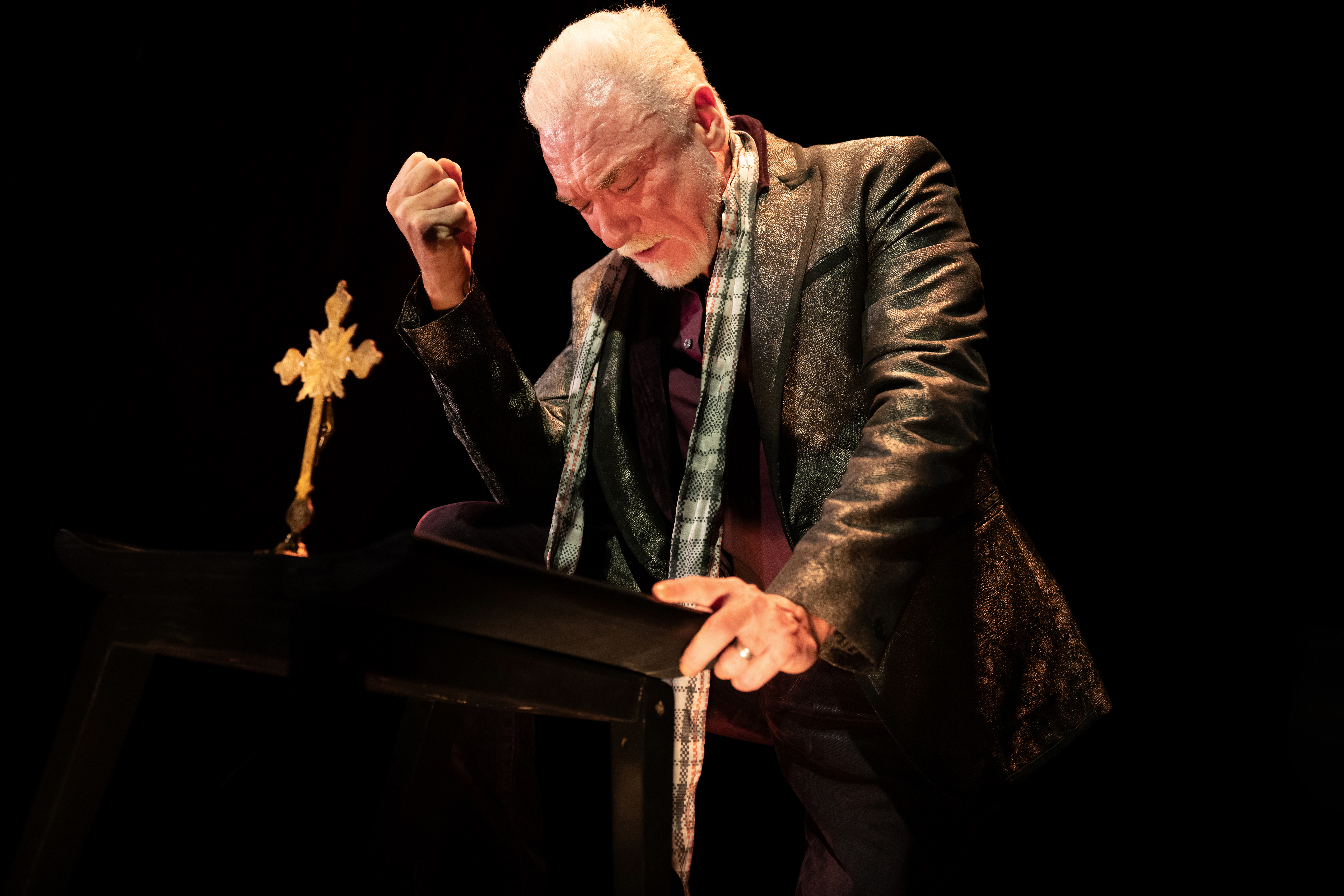
(© Julieta Cervantes)
That essentially begins, says Page decked out in a scintillating Luciferian jacket (costumes by Emily Rebholz), with recognizing that before Shakespeare there were no literary villains, at least not in the modern sense. He imagines Shakespeare as a boy going to see a morality play in which the Vice character was the main source of conflict. Vice was not a person per se but an idea such as Lust or Greed. It wasn’t until Shakespeare created Richard III, says Page, that wicked impulses began to be coupled with complex human motivations in characters who were recognizably human.
It’s a compelling theme that Page continues to explore by looking at Shakespeare’s plays in chronological order and by observing how he developed and enriched his villains with internal conflict, self-doubt, and even sympathy. Shylock, from The Merchant of Venice, gets a good bit of time in this regard, and Page’s performance of the “Hath not a Jew eyes” speech is one of highlights of the show — so infused with empathy and restraint that it might almost seem to disqualify Shylock as a villain.
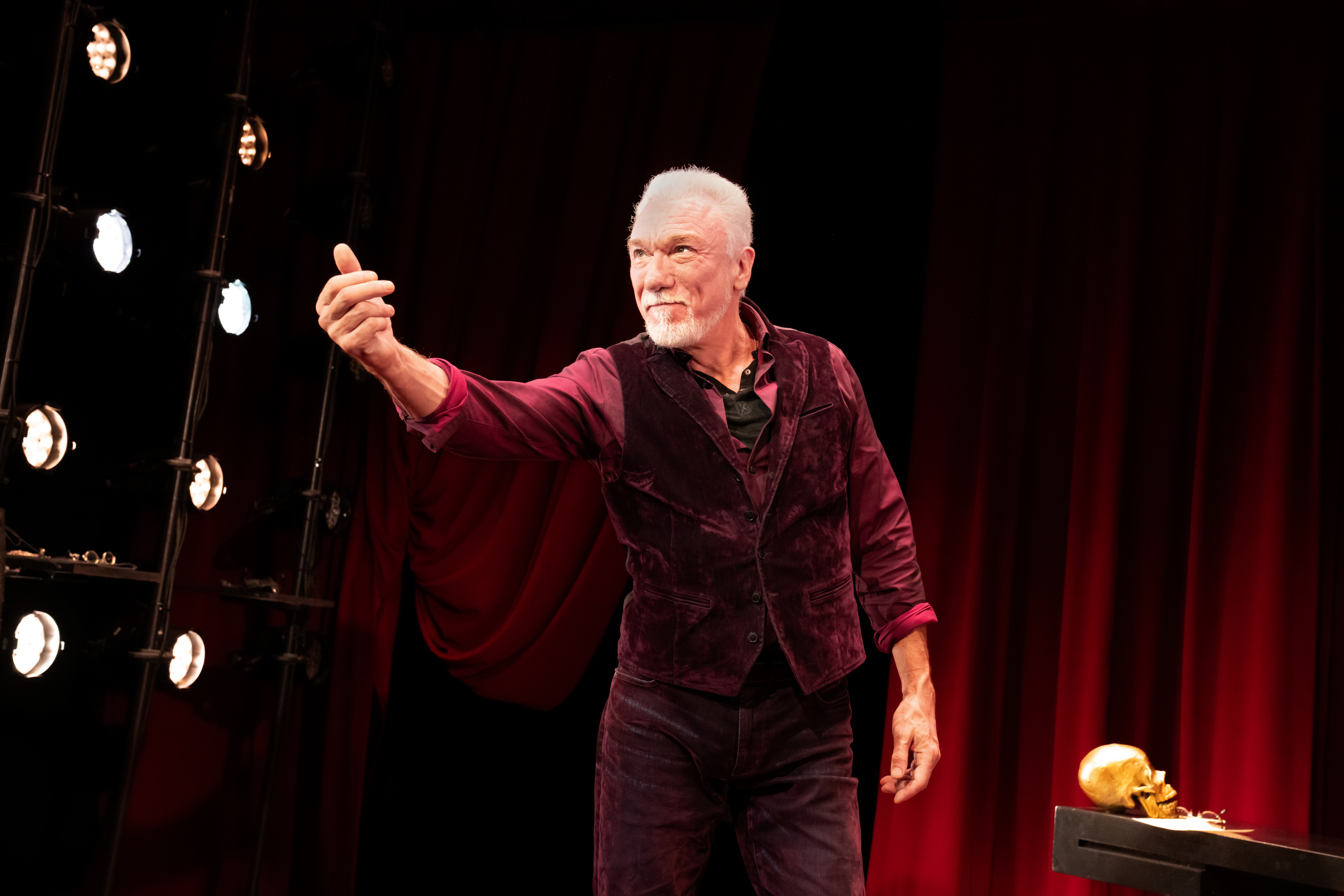
(© Julieta Cervantes)
Yet I found Page’s explanation of Shakespeare’s empathy for a Jewish character — who, stereotypically during Shakespeare’s time, would have been depicted as malicious to the core — strained credulity. Page attributes Shakespeare’s embrace of “otherness” (the extent to which he empathized with other cultures, races, and religions is itself debatable) to his love of the so-called Dark Lady of the sonnets, who some scholars have claimed may have been of Mediterranean or African descent. Page runs with this idea despite a consensus among many other scholars that the Dark Lady is more likely a poetic fiction.
Fortunately, Page’s show is less about the murky, mysterious corridors of Shakespeare’s life than about conjuring demonic presences from the plays in well-chosen and brilliantly performed speeches (Stacey Derosier’s sinister lighting and Darron L West’s sound design heighten the witchiness of the Macbeth sequence in particular). The expected villains all make appearances: Claudius from Hamlet, Edmund from Lear, Angelo from Measure for Measure, and of course Iago from Othello, who Page argues is Shakespeare’s one true sociopath. A humorous if somewhat off-brand inclusion is Malvolio from Twelfth Night, primarily because the name means something like “ill will” rather than because Malvolio comes even close to the evil of the others.
Other scoundrels and scallywags possibly more deserving the label of villain do not get any mention. Don John from Much Ado About Nothing seems like a curious omission, but there’s only so much wickedness you can fit into an hour and a half. Too bad that one of my favorites, Lady Macbeth, gets only a brief nod at the beginning in this male-dominated catalogue of characters. One could easily argue that for malevolence and complexity of character, Lady M. out-devils them all.





